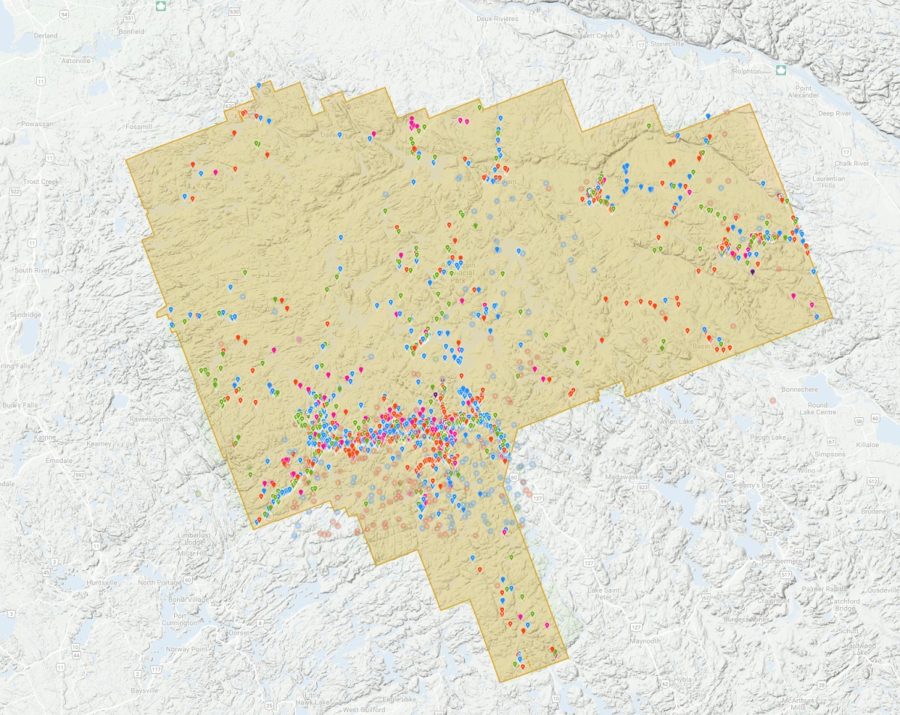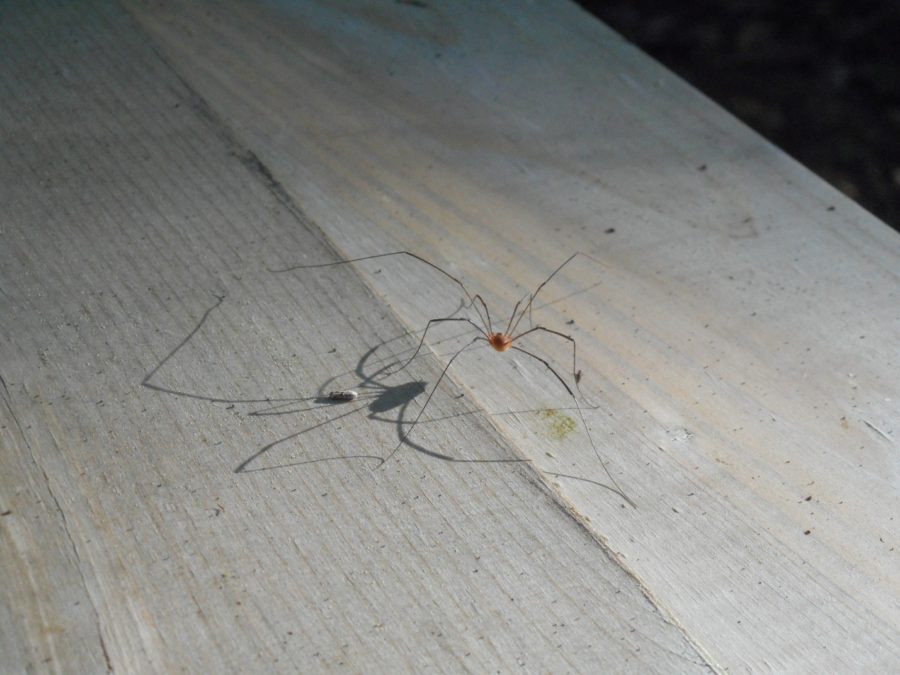This post was written by David LeGros, park naturalist at Algonquin Provincial Park.
Are you an explorer? Heading out into parks on a journey of discovery, anxious to see what is on the next lake, around the bend on the portage, or even what might turn up at your campsite?
Me too. I love exploring the backcountry on canoe trips, and I love getting to know Algonquin a little bit better every time. I am also an avid naturalist, so I like to identify the things I see when I’m out there (and no, I don’t know all the species).
Lately, I have become obsessed with iNaturalist (ask my wife). So when we were planning our last canoe trip, I gently guided the route to be in a place where few nature nerds have made records before. For the glory, but also for real/good reasons too.

In case you aren’t familiar with it, iNaturalist is a community science platform that wants your observations of nature – anything and everything. From the smallest bugs to the biggest trees, it’s all good.
Getting started?
All you need to do is download the app / open the website (here’s how!), take a picture, and submit it to iNaturalist. In so doing, you have just improved our understanding of the distribution of one species, and helped Ontario Parks understand the biodiversity in our parks.

The iNaturalist platform can record species anywhere in the world, but Ontario Parks has created special projects within the platform to track observations in every single one of our parks, from Polar Bear Provincial Park to Fish Point Provincial Park!

You can take pictures with your phone or digital camera. You can submit in real-time if there is cell signal (not likely in the backcountry) or when you get home.
Take iNat to the backcountry
The image below is what Algonquin Provincial Park looks like on iNaturalist. Predictably, most of the observations are concentrated around the Highway 60 area. That’s where most people visit: the main trails, Visitor Centre, museums and campgrounds are all there.

Amazingly, there are more than 50,000 observations of over 3,500 species in Algonquin already. But we have all of this great backcountry with canoe routes and backpacking trails that hardly get any attention, and have very few records on iNaturalist.
Want to help us fix that?
The next time you go backcountry, consider snapping a few photos of wildlife, plants, mushrooms or even the fish you’ve caught, and submitting them to iNaturalist!

On my past two canoe trips, I set a personal challenge of submitting 100 observations to community science platforms. The first trip, I only made it to 77, but the second trip I managed well over 120.

Thousands of backcountry users visit Algonquin and other parks every year. Think of what the map might look like and the species that might turn up if everyone submitted even one record each!
You could change everything
Set a personal challenge, take some pictures and submit them to iNaturalist. Even a single observation can change what we know about our park; it could be a entirely new location for a rare species, or bring an invasive species to our attention that we didn’t know was there.

To add to the fun, iNaturalist keeps track of which observations are yours, so you can watch as they accumulate.
Did I mention you can compete with your friends and family? Just today, I made my 2000th observation; it was a super cool moth, right in my own backyard.
Inspired to get started? Check out our recent blog post “The cat and the Mudbug: a guide to using iNaturalist.“
Please respect wildlife and park regulations while exploring. This post shares some great tips about how you can use your phone or camera responsibly in parks.
